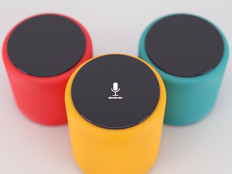3 Technology Trends Already Emerging in the Senior Care Space
Early-stage smart home pilots, under way at senior care communities across the country, foreshadow a transformation in senior living.
This transformation will aggressively leverage technology — including advances in mobility, the Internet of Things, data analytics and interface design — to address the logistical and economic challenges posed by an aging population.
“CDW Healthcare is proud to bring solutions to market aimed at improving seniors’ quality of life, health and overall well-being,” says Bob Rossi, vice president of CDW Healthcare. “We are honored to work with leading senior care facilities to pilot new and innovative tracking and monitoring solutions, which will bring very powerful information to the patient, care teams and family members.”
Although this transformation is still in its early stages, three key trends are already apparent:
Trend #1: Longer, Healthier, Happier Lives for Seniors
Innovations in surgery, pharmaceuticals and other medical care continue to extend the life of human beings. But for those additional days to be happy and fulfilling ones, seniors need to maintain physical wellness, mental acuity and social engagement.
Technology can play a key role in this. Basic technologies such as visual doorbells and simplified video conferencing help seniors stay connected with friends and family. Wearables encourage people to be more active. And popular apps such as Lumosity and CogniFit are proving to be supportive of improved brainpower.
Dr. David Rhew, chief medical officer at Samsung Electronics America, envisions a future where these first-wave technologies morph into even more powerful tools to enrich senior life. Fitness, socialization and cognitive training programs will be unified and customized to address the needs and capabilities of each individual. Gamification techniques will help motivate entire communities of seniors to strive for better personal performance.
“Technology can clearly help seniors achieve much better outcomes as they age,” Rhew says. “The key is to create digital experiences that promote the broadest possible adoption and the most complete possible utilization of available resources.”
Trend #2: New Services for Seniors Aging in Place
As seniors age, aspects of independent living that they once took for granted often become more challenging. Paying bills, buying groceries and caring for their home all increase in difficulty. Of course, seniors can hire people to manage all these things, but managing 20 to 30 services can itself become overwhelming.
Smart home technology, however, can make it easier for seniors to get and manage the services they need. With the right application design, they can pay bills, do their shopping and manage services such as house cleaning and yard work from a single, easy-to-use interface. Sensors can alert service providers when medication is low or light bulbs need changing.
At the same time, providers can leverage these technologies to bundle comprehensive, aging-in-place offerings. These bundles might combine healthcare, home care and personal care offerings in a la carte menus or tiered products to match individuals’ evolving needs. The resulting market will help seniors stay in their homes, living better lives, while also creating new business opportunities for existing institutions and new, innovative entrants.
Trend #3: Better “Silver Economics”
Not everyone earns enough or saves enough over their lifetime to pay for the assistance they need later in life. This disparity between needs and means can limit access to the services that individuals need, while also putting a strain on public-sector budgets.
Technology for seniors mitigates this problem by driving down the cost of quality care. It allows healthcare providers to serve more seniors, with less staff, by performing many diagnostics remotely. It reduces the number of costly acute incidents by promoting earlier intervention in health problems. And by making it possible for seniors to age in place longer, it reduces the strain on limited institutional space.
Technology solutions can also help providers differentiate premium services with premium pricing for those who can afford it. These services may potentially include everything from automatic food replenishment and home-based pet care to online learning and entertainment offerings geared to seniors.
As Samsung’s Rhew notes, “Technology can improve quality of care, access to care and the cost-efficiency of care — as long as you integrate the right technologies into the right user experience.”
Download the free white paper, "Better Connecting Seniors at Home" to learn more.









